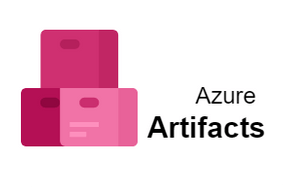Blob storage is a feature of Microsoft Azure that lets developers store unstructured data in Microsoft’s cloud platform. This data can be accessed from anywhere in the world and can include audio, video and text. Blobs are grouped into “containers” that are tied to user accounts.
Azure Storage REST API
The REST APIs for the Microsoft Azure storage services offer programmatic access to the Blob, Queue, Table, and File services in Azure or in the development environment via the storage emulator.
All storage services are accessible via REST APIs. Storage services may be accessed from within a service running in Azure, or directly over the Internet from any application that can send an HTTP/HTTPS request and receive an HTTP/HTTPS response.
Blobs
Azure Storage supports three types of blobs:
Block Blobs
These blobs are ideal for storing documents and text or binary media files. Block blobs can store up to about 190.7 TiB.
Append blobs
Append blobs are similar to Block blobs, but more optimized for appending operations. Append blobs are ideal for scenarios such as logging data from virtual machines. Each block in an append blob can be a different size, up to a maximum of 4 MiB, and an append blob can include up to 50,000 blocks.
Page Blobs
Page blobs can store about 8 TB of data which makes these extremely efficient for scenarios that require high reading and writing operations. This blob storage option is useful for all Azure virtual machines storage disks including the operating system disk. Within Azure, there are two-page blob categories like Standard, used for virtual machines with an average amount of read/write operations, and Premium, used for virtual machines for intensive read/write operations.
Blob Storage Accounts
Blob storage accounts offer an access tier which is specified at the time of storage creation and can be modified afterward as required. Unlike the storage option found on Azure virtual machines, i.e., hard disks of Infrastructure as a Service (IAAS), the blob storage option is not persistent. Due to this reason, any files that need to be stored long-term should be stored in persistent stores known as tiers.
There are three types of access tiers:
1. Hot Access Tier
Out of the three access tiers, the hot tier has the lowest access cost, but the highest storage cost. The hot access tier would be most ideal for scenarios where data is frequently accessed for reading and writing.
2. Cool Access Tier
The cool tier is used when the data is not often accessed which enables this tier to store data at a much lower storage cost. Cool storage is ideal for storing short-term backup data and data that should be accessible immediately when required but is not needed regularly.
3. Archive Access Tier
The archive access tier is particularly interesting because the data is offline and cannot be accessed immediately. Data stored in this tier would have several hours of retrieval latency which has higher data retrieval costs and the lowest storage costs compared with the other two tiers. Therefore, this tier is most suitable for storing long-term backups and data. Data in the Archive tier should be stored for a minimum of 180 days.
Using Azure Blobs to store your business data has huge benefits:
Convenience
As cloud storage uses native disks that support synchronized data storage redundancy, it will also ensure coding for durability. Additionally, granular blob levels also support data management, user access, and GDPR.
Efficiency
Placing the data in blob archives preserves the ability to search and obtain the stored data without the need of accessing it manually.
Data protection
When data is stored on tape, it is more secure. But it will result in worries about physical media management and warehousing. By using blob storage, data becomes redundant and self-healing due to the options for shadow copying and geo-redundancies.
No infrastructure management
There is no need to struggle with hardware maintenance or upgrades, and the IT team doesn’t have to refresh the tape hardware’s every five to ten years.
Security
Data stored in blobs are automatically encrypted and protected with AES 256-bit encryption, and AES encryption is known for its extreme security. Also, with Azure’s multi-regions, the data can be scattered to make data storage further safeguarded.
Why Use Azure Blob Storage
Azure blob storage is primarily used to store and later retrieve large amounts of binary objects known simply as files. Blob storage can be used in many ways. Blob storage is very convenient if you are planning to use Azure’s Cloud services, also known as Platform as a Service (PaaS) as blob storage provides persistent data storage. With these cloud services, Azure offers a dedicated virtual machine to run your code without the headache of managing virtual machines.
Strong Consistency
Blob storage ensures the user has superior data integrity. The data accessed is always the latest version as it instantly updates changes made to an object.
Object Mutability
The ability to edit a specific data object will improve overall performance while reducing bandwidth consumption.
Geo-Redundancy
Ensures maximum availability by geo-replication to enhance both local and global access which leads to maximum business continuity.
Worldwide access
With rest-based object storage, the data stored in blob storage can be accessed from anywhere in the world with Azure’s regional data centers. It allows access to the right people at the right time without the need to worry about physical location.
Service Level Agreement
Similar to other Azure Services, Microsoft Azure guarantees 99.9% of service availability for Azure storage accounts which ensures your business is always available from anywhere in the world whenever it is needed.



0 Comments